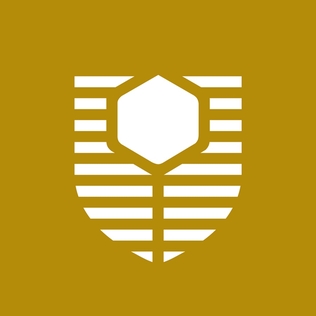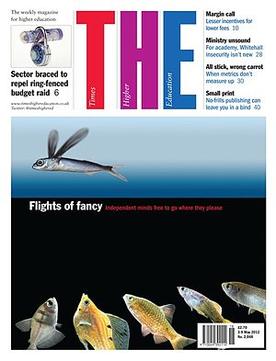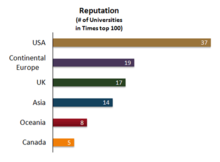College and university rankings order higher education institutions based on various criteria, with factors differing depending on the specific ranking system. These rankings can be conducted at the national or international level, assessing institutions within a single country, within a specific geographical region, or worldwide. Rankings are typically conducted by magazines, newspapers, websites, governments, or academics.

The Renmin University of China (RUC) is a public university in Haidian, Beijing, China. The university is affiliated with the Ministry of Education, and co-funded by the Ministry of Education and the Beijing Municipal People's Government. The university is part of Project 211, Project 985, and the Double First-Class Construction.

Tohoku University is a public research university in Sendai, Miyagi, Japan. It is colloquially referred to as Tohokudai or Tonpei.
Three national rankings of universities in the United Kingdom are published annually, by The Complete University Guide, The Guardian and jointly by The Times and The Sunday Times. Rankings have also been produced in the past by The Daily Telegraph and Financial Times. UK Universities also rank highly in global university rankings with 8 UK Universities ranking in the top 100 of the three major global rankings: QS World University Rankings, Times Higher Education World University Rankings and Academic Ranking of World Universities.

Beijing Normal University (BNU) is a public university in Beijing, China. It is affiliated with the Ministry of Education of China, and co-funded by the Ministry of Education and the Beijing Municipal People's Government. The university is part of Project 211, Project 985, and the Double First-Class Construction.

The University of Science and Technology of China (USTC) is a public university in Baohe, China. It is affiliated with the Chinese Academy of Sciences, and co-funded by the Chinese Academy of Sciences, the Ministry of Education of China, and the Anhui Provincial Government. The university is part of Project 211, Project 985, and the Double First-Class Construction.

The Academic Ranking of World Universities (ARWU), also known as the Shanghai Ranking, is one of the annual publications of world university rankings. The league table was originally compiled and issued by Shanghai Jiao Tong University in 2003, making it the first global university ranking with multifarious indicators.
The golden triangle is the triangle formed by the university cities of Cambridge, London, and Oxford in the south east of England in the United Kingdom. The triangle is occasionally referred to as the Loxbridge triangle, a portmanteau of London and Oxbridge or, when limited to five members, the G5.

Curtin University Malaysia is the Malaysian campus of Curtin University, a public university based in Australia. It is the university's largest campus outside of Australia with a total area of 1,200-hectare (3,000-acre) comprising academic and residential blocks. It offers undergraduate and postgraduate programs in various fields of commerce, engineering, computational sciences, humanities and health sciences. It also offers foundational courses and a Doctor of Philosophy (PhD) among other higher degree by research programs. It is named after John Curtin, a prominent Prime Minister of Australia during World War II from 1941 to 1945.
Quacquarelli Symonds (QS) is a higher education analyst and services provider headquartered in London with offices in Europe, Asia, and the Americas.

Times Higher Education (THE), formerly The Times Higher Education Supplement, is a British magazine reporting specifically on news and issues related to higher education.
The QS World University Rankings is a portfolio of comparative college and university rankings compiled by Quacquarelli Symonds, a higher education analytics firm. Its first and earliest edition was published in collaboration with Times Higher Education (THE) magazine as Times Higher Education–QS World University Rankings, inaugurated in 2004 to provide an independent source of comparative data about university performance. In 2009, the two organizations parted ways to produce independent university rankings, the QS World University Rankings and THE World University Rankings.

Rankings of universities in South Africa are largely based on international university rankings, since there are no South African rankings as of yet. The Council for Higher Education (CHE) has recently taken a more critical view of university rankings, publishing an opinion that argues that rankings are both neocolonial and neoliberal. More than 47 publishing companies have used “inappropriate indicators …as a proxy for offering a quality education”. Then promoted these arbitrary metrics as part of a billion-dollar industry. This has led to number of gaming behaviors in the Higher Educational sector.. Since 2013, Rhodes University had held this critical position about rankings Rhodes position was given credence by Wits University, when Wits recently re-published an article in “The Conversation”entitled “ University rankings are unscientific and bad for education: experts point out the flaws”.. This principled stand is increasingly supported by notable institutions such the University of Zurich, Utrecht University, some of the Indian Institutes of Technology as well as as Harvard and Yale Law School. Recently Nature concurred with this opinion that rankings are methodologically flawed.
College and university rankings in the United States order the best U.S. colleges and universities based on factors that vary depending on the ranking. Rankings are typically conducted by magazines, newspapers, websites, governments, or academics. In addition to ranking entire institutions, specific programs, departments, and schools can be ranked. Some rankings consider measures of wealth, excellence in research, selective admissions, and alumni success. There is also much debate about rankings' interpretation, accuracy, and usefulness.
Rankings of universities in Canada are typically published annually by a variety of nationally, and internationally based publications. Rankings of post-secondary institutions have most often been conducted by magazines, newspapers, websites, governments, or academia. Ranking are established to help inform potential applicants about universities in Canada based on a range of criteria, including student body characteristics, classes, faculty, finances, library, and reputation. Various rankings consider combinations of factors, including funding and endowment, research excellence and/or influence, specialization expertise, admissions, student options, award numbers, internationalization, graduate employment, industrial linkage, historical reputation and other criteria. Various rankings also evaluate universities based on research output.
The University Ranking by Academic Performance (URAP) is a university ranking developed by the Informatics Institute of Middle East Technical University. Since 2010, it has been publishing annual national and global college and university rankings for top 2000 institutions. The scientometrics measurement of URAP is based on data obtained from the Institute for Scientific Information via Web of Science and inCites. For global rankings, URAP employs indicators of research performance including the number of articles, citation, total documents, article impact total, citation impact total, and international collaboration. In addition to global rankings, URAP publishes regional rankings for universities in Turkey using additional indicators such as the number of students and faculty members obtained from Center of Measuring, Selection and Placement ÖSYM.
The Best Global Universities ranking by U.S. News & World Report is an annual ranking of world universities. On October 28, 2014, U.S. News, which began ranking American universities in 1983, published its inaugural global ranking, assessing 500 universities in 49 countries. That first installment of the Best Global Universities Ranking was published without prior announcement, with U.S. News later clarifying that the rankings of that year were a trial balloon for the publication's entrance into the global university rankings field. After pre-announcing the rankings of next year, in 2016, the periodical formalized the global university rankings as part of its regular annual programming. Having made official the ranking methodology, it disclosed that it is based on 10 different indicators that measure universities' academic performance and reputations. The ranking has since been revised and expanded to cover 1,500 institutions in 81 countries and now includes five regional and 28 subject rankings. Employing 13 indicators and based largely on data provided by Clarivate, the U.S. News global ranking is methodologically different from its ranking of American institutions; global universities are rated using factors such as research reputation, academic publications, and the number of highly cited papers.
Universities in Malaysia are ranked in a number of ways, including both national and international ranks.
Round University Ranking is a Moscow, Russia-based world university ranking, assessing effectiveness of 700 leading world universities based on 20 indicators distributed among 4 key dimension areas: teaching, research, international diversity, and financial sustainability.
This article presents an overview of university rankings in Pakistan. Within Pakistan, the Higher Education Commission (HEC) provides official rankings of higher education institutions (HEIs) nationally, based on a multitude of criteria. There are also various magazines, newspapers and international agencies/standards which provide rankings and analysis.









